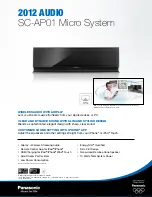
About this manual
This manual is divided into five main sections, and is designed to provide a comprehensive source of
information for Duality console users. The table of contents will help you to familiarise yourself with the basic
content of each section. If you are reading this from an electronic version of the manual, use the ‘bookmark’
feature to rapidly locate to virtually any topic.
If you have not previously used an SSL console, you are advised to read the Duality overview at the start of
Section 2. Those of you who have experience of SSL’s range of analogue consoles will have little difficulty
getting to grips with the operation of this console’s control surface; features that are specific to Duality are fully
described in Section 2.
To set-up and configure the software interface between Duality and your chosen DAW, please study Section 3.
This section also covers the DAW functions that you can usefully control from Duality’s centre section.
Finally, the last section in this manual is provided to hold useful appendices that you may be supplied with from
time to time.
Conventions Used
Some typographical conventions have been used in this manual to help distinguish explanatory text from the
text referring to console items. They are as follows:
• Switch cap engravings on the console are usually in
UPPERCASE
(eg.
SOLO
).
• Silk screened text on the console’s control surface can be either UPPERCASE (eg. DYNAMICS), or
lowercase bold
(eg.
auto
), or
Titlecase
(eg.
Talkback Mix
).
• Any text on the console’s TFT screen is referred to in a
Bold
typeface.
•
Items of note or cautions are shown in a red italic typeface.
• Whenever this manual mentions the selection or pressing of a button, it is assumed that the button was not
active (ie. not lit), and that this action has made it active (ie. it has become lit).
• Similarly, whenever the manual mentions the deselection of a button (or pressing it again), it is assumed that
it was active before the action, and has become inactive due to this action.
Contacting Solid State Logic
If you cannot find the information you need on the pages of this manual, please refer to the Duality support
pages at
http://www.solid-state-logic.com
About This Manual
1 - 4
Duality Operator’s Manual













































